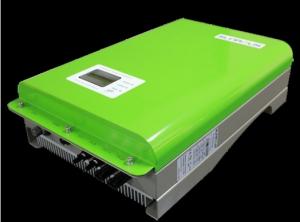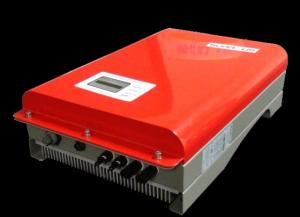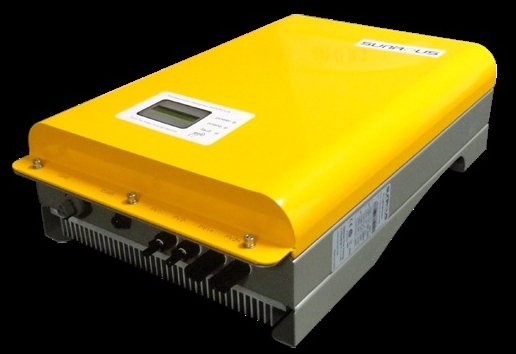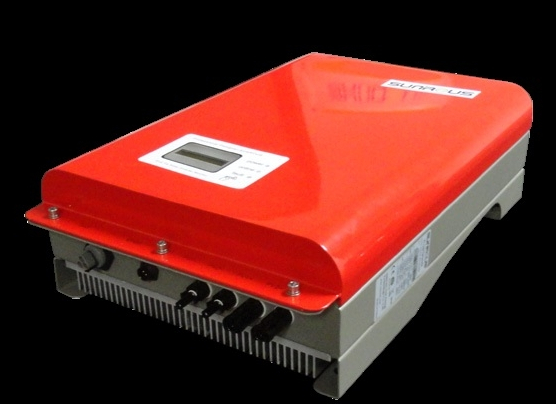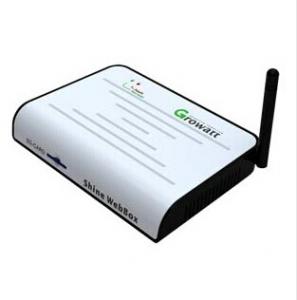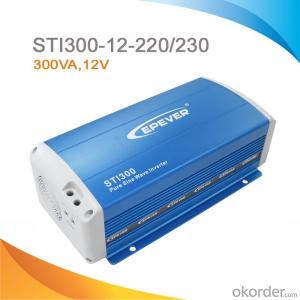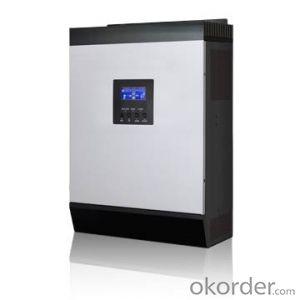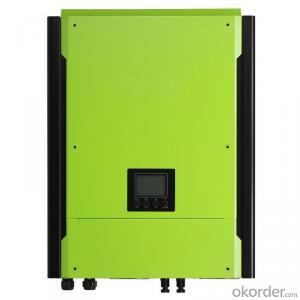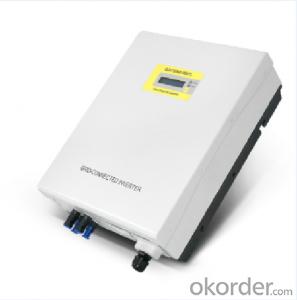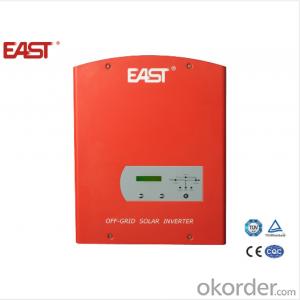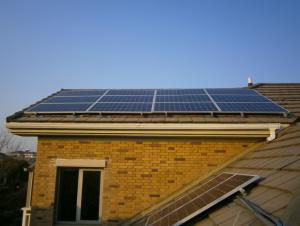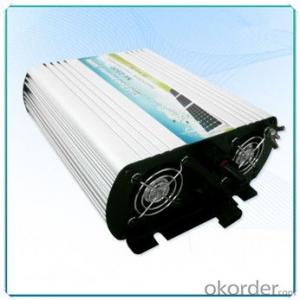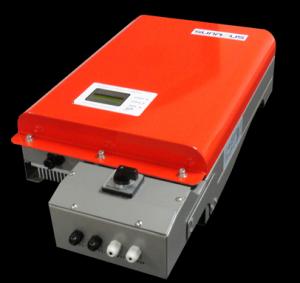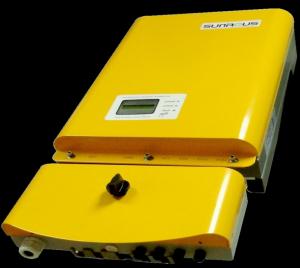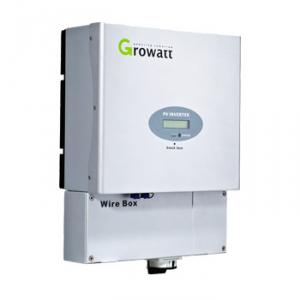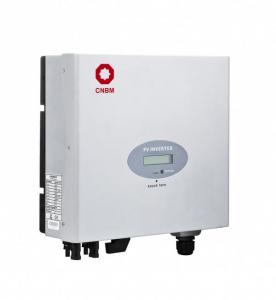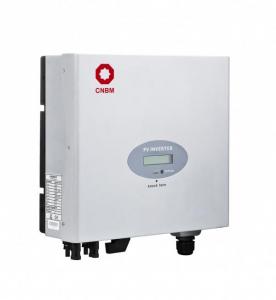Freesun Solar PV Grid-Tied Inverter for High Quality Solar System
- Loading Port:
- Shanghai
- Payment Terms:
- TT or LC
- Min Order Qty:
- 20 mm
- Supply Capability:
- 1000 mm/month
OKorder Service Pledge
OKorder Financial Service
You Might Also Like
PV Grid-Tied Inverter for Syolar System High Quality
5years warranty
·Sealing stainless steel shell, suitable for indoor or outdoor installation
·Using industrial frequency transformer in isolation,ensure system safety and reliability
·The highest efficiency achieves 94. 8% have satisfactory cosmetic
·Adopt connectors type cable connection, easy operation and installation
·With multiple independent MPPT channel function to ensure maximum photovoltaic system
capacity
·Has the active and passive double prevent island function
·Working temperature range - 25 to 50 ℃
LF series 2.0kw — 2.8kw
Features: Double channel input, and their respective independent of the MPPT function, make photovoltaic array installation is more fexible.

| GT2.0-ZX-01/LF | GT2.8-ZX-01/LF | |
|---|---|---|
| Input(DC) | ||
| Max.DC Power | 2350W | 3270W |
| Rated input voltage | 280V | 280V |
| PV Voltage range, MPP | 150V ~ 400V | 150V ~ 400V |
| Max.DC Voltage | 6+6A | 10+10 A |
| Number of MPP trackers | 2 | 2 |
| Number of strings (parallel) | 2 | 2 |
| Output(AC) | ||
| Nominal AC /max AC power | 2000W / 2200W | 2800W / 3080W |
| Max.output current | 10.0A | 15.0A |
| Nominal AC Voltage | 120V/220/ 230/240V | 120V/220/ 230/240V |
| AC range | -15+10%(Vrms) adjustable | -15+10%(Vrms) adjustable |
| AC grid frequency/range | 50/60/±0.5Hz adjustable | 50/60/±0.5Hz adjustable |
| Power factor | >0.99 | >0.99 |
| THD | <4% | <4% |
| AC connection | Single-phase | Single-phase |
| effciency | ||
| Max.effciency/Euro-ETA | >94.5% / >93.0% | >94.5% / >93.0% |
| Protection devices | √ | √ |
| DC reverse polarity protection | √ | √ |
| AC short-circuit protection | √ | √ |
| Ground fault monitoring | √ | √ |
| Grid monitoring | √ | √ |
| Output Transient Voltage Suppression | √ | √ |
| General data | ||
| Dimensions (W/ H / D) in mm | 350 / 530 / 146 mm | 350 / 530 / 146 mm |
| Weight (Kg) | 36.5 | 42.5 |
| Operating temperature range | -25 ~ +50 | -25 ~ +50 |
| Storage temperature range | -40 ~ +70 | -40 ~ +70 |
| Ambient humidity | 0 ~ 95% | 0 ~ 95% |
| Consumption (night) | <0.5W | <0.5W |
| Topology | HF-transformer | HF-transformer |
| Cooling concept | Convection | Convection |
| Enclosure type | IP65 | IP65 |
| Features | ||
| DC connection: PV special connector | √ | √ |
| AC connection: connector | √ | √ |
| LCD display & Backlit | √ | √ |
| LED display | √ | √ |
| Interfaces: RS485 | √ | √ |
| Warranty: 10years | √ | √ |
| Certifcates & approvals | UL1741/ IEEE1547/ VDE0126-1-1/ AS4777/ DK5940 | UL1741/ IEEE1547/ VDE0126-1-1/ AS4777/ DK5940 |
| Electromagnetic compatibility | IEC62103/ EN50178/ EN61000-6-1/2/3 | IEC62103/ EN50178/ EN61000-6-1/2/3 |
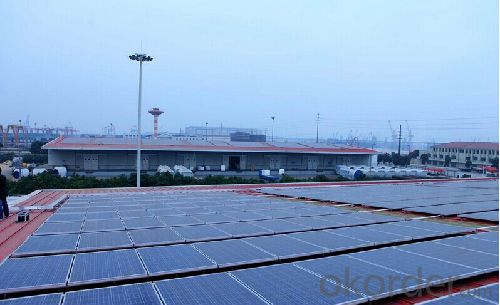
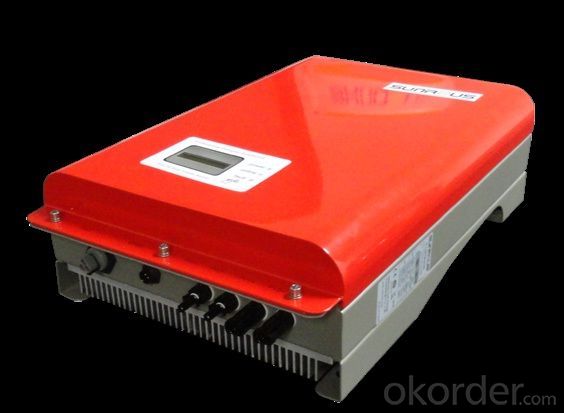
- Q: Can a solar inverter be used with different AC voltage systems?
- Yes, a solar inverter can be used with different AC voltage systems as long as it is compatible with the specific voltage range and frequency of the AC system.
- Q: Can a solar inverter be used with batteries?
- Yes, a solar inverter can be used with batteries. In fact, using a solar inverter with batteries is a common practice in solar energy systems. The inverter helps convert the direct current (DC) electricity generated by the solar panels into alternating current (AC) electricity that can be used to power various appliances and devices. When batteries are connected to the system, the excess electricity generated by the solar panels can be stored in the batteries for later use, allowing for continuous power supply even when the sun is not shining.
- Q: How does a solar inverter handle ground fault protection?
- A solar inverter handles ground fault protection by continuously monitoring the electrical currents flowing between the solar panels and the grid. If it detects any abnormal current leakage to the ground, it quickly shuts down the system to prevent any potential electrical hazards or damage. This ensures the safety of both the equipment and personnel working with the solar installation.
- Q: What is the maximum power rating of a solar inverter?
- The maximum power rating of a solar inverter typically depends on its size and capacity, but it can range from a few hundred watts to several megawatts.
- Q: How does a solar inverter handle voltage and frequency variations caused by grid disturbances?
- A solar inverter is designed to handle voltage and frequency variations caused by grid disturbances by regulating and stabilizing the incoming AC power from the grid. It constantly monitors the voltage and frequency levels of the grid and adjusts its internal components accordingly to ensure that the power being generated by the solar panels is synchronized with the grid. In cases of voltage or frequency deviations, the inverter employs advanced control algorithms to rectify the imbalances and maintain a steady flow of power to the grid. This helps to protect the electrical appliances and equipment connected to the grid from potential damage and ensures the stability and reliability of the overall power system.
- Q: What is the power factor correction capability of a solar inverter?
- The power factor correction capability of a solar inverter refers to its ability to adjust the power factor of the electricity it produces. A power factor is a ratio that measures the efficiency of electrical power usage, with a value between 0 and 1. A solar inverter with good power factor correction capability can optimize the power factor towards unity (1), which indicates maximum efficiency. This helps in minimizing reactive power and reducing energy wastage, resulting in a more efficient and effective utilization of solar power.
- Q: What is the role of a solar inverter in preventing islanding?
- The role of a solar inverter in preventing islanding is to continuously monitor the electrical grid and quickly disconnect from it if it detects any abnormalities or disruptions. This prevents the solar inverter from operating in an isolated or "islanded" mode, which could pose safety risks to utility workers and damage electrical equipment. By promptly disconnecting from the grid during such events, the solar inverter helps maintain the stability and integrity of the overall electrical system.
- Q: PV grid-connected inverter and independent inverter in the control of what is the difference
- PV grid-connected inverter in the grid before the inverter needs to determine the phase voltage phase frequency, the first phase-locked, in the grid and power generation.
- Q: Can a solar inverter be used in regions with high humidity or moisture levels?
- Yes, solar inverters can be used in regions with high humidity or moisture levels. However, it is important to ensure that the inverters are designed and built to withstand such conditions. Waterproof or moisture-resistant features may be necessary to protect the inverters from potential damage caused by moisture or humidity. Regular maintenance and monitoring are also recommended to ensure optimal performance in such environments.
- Q: How does a solar inverter handle high temperatures?
- A solar inverter handles high temperatures by incorporating various cooling mechanisms such as heat sinks, fans, and thermal management systems. These components help dissipate heat generated during the inverter's operation, preventing overheating and ensuring optimal performance even in hot climates.
Send your message to us
Freesun Solar PV Grid-Tied Inverter for High Quality Solar System
- Loading Port:
- Shanghai
- Payment Terms:
- TT or LC
- Min Order Qty:
- 20 mm
- Supply Capability:
- 1000 mm/month
OKorder Service Pledge
OKorder Financial Service
Similar products
Hot products
Hot Searches
Related keywords

